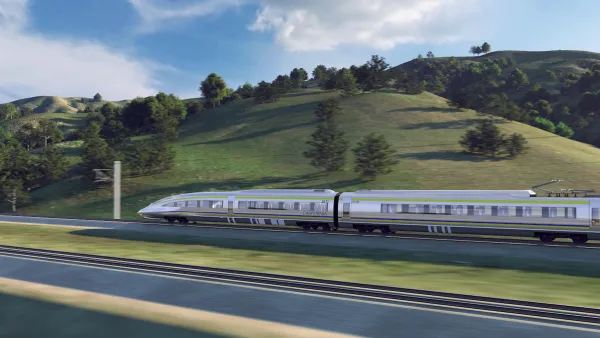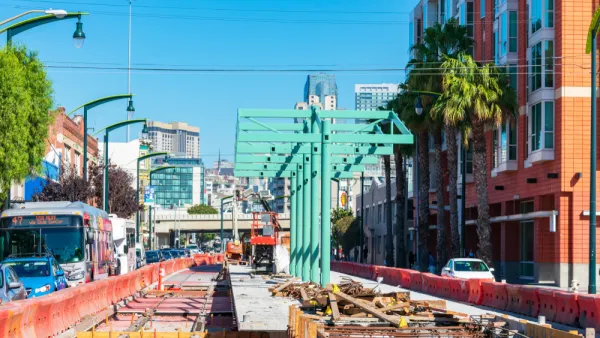The state's high-speed rail project is billions of dollars over budget and years behind schedule. A major problem is that consultants have been running the show from the start, say critics.

Ralph Vartabedian reports on the troubled state of California’s high-speed rail project and the problematic role of consultants. The project started in 2008 with a staff of just 10 state employees, and it has depended on consultants ever since:
Consultants assured the state there was little reason to hire hundreds or thousands of in-house engineers and rail experts, because the consultants could handle the heavy work themselves and save California money. It would take them only 12 years to bore under mountains, bridge rivers and build 520 miles of rail bed — all at a cost of just $33 billion.
The result of turning over the reins to consultants has been devastating, writes Vartabedian. "Ten years after voters approved it, the project is $44 billion over budget and 13 years behind schedule."
He describes a Kafkaesque organizational structure where government employees report to consultants and consultants manage other consultants. Projections have also been wildly off base, and conflicts of interest abound, including large contributions from engineering and construction firms to the campaign for the bond that has funded the project.
In a follow-up article, Vartabedian reports that the California High-Speed Rail Authority just delivered a report to the state legislature describing the many issues plaguing the project:
The report contains some sobering caveats that legislators and state leaders will have to consider: It will cost a stunning $20.4 billion to complete just a 171-mile segment between Merced and Bakersfield, a commitment of an additional $15 billion over what has been spent to date for paper studies, environmental reports and construction.
Governor Gavin Newsom has plans to move oversight and management responsibilities to a state staff, which will replace consultants. The authority says it can get the project back on track, even though the Central Valley part of the project faces major fiscal challenges and links to Southern California or the San Francisco Bay Area appear financially unfeasible.
FULL STORY: How California’s faltering high-speed rail project was ‘captured’ by costly consultants

Analysis: Cybertruck Fatality Rate Far Exceeds That of Ford Pinto
The Tesla Cybertruck was recalled seven times last year.

National Parks Layoffs Will Cause Communities to Lose Billions
Thousands of essential park workers were laid off this week, just before the busy spring break season.

Retro-silient?: America’s First “Eco-burb,” The Woodlands Turns 50
A master-planned community north of Houston offers lessons on green infrastructure and resilient design, but falls short of its founder’s lofty affordability and walkability goals.

Test News Post 1
This is a summary

Analysis: Cybertruck Fatality Rate Far Exceeds That of Ford Pinto
The Tesla Cybertruck was recalled seven times last year.

Test News Headline 46
Test for the image on the front page.
Urban Design for Planners 1: Software Tools
This six-course series explores essential urban design concepts using open source software and equips planners with the tools they need to participate fully in the urban design process.
Planning for Universal Design
Learn the tools for implementing Universal Design in planning regulations.
EMC Planning Group, Inc.
Planetizen
Planetizen
Mpact (formerly Rail~Volution)
Great Falls Development Authority, Inc.
HUDs Office of Policy Development and Research
NYU Wagner Graduate School of Public Service




























